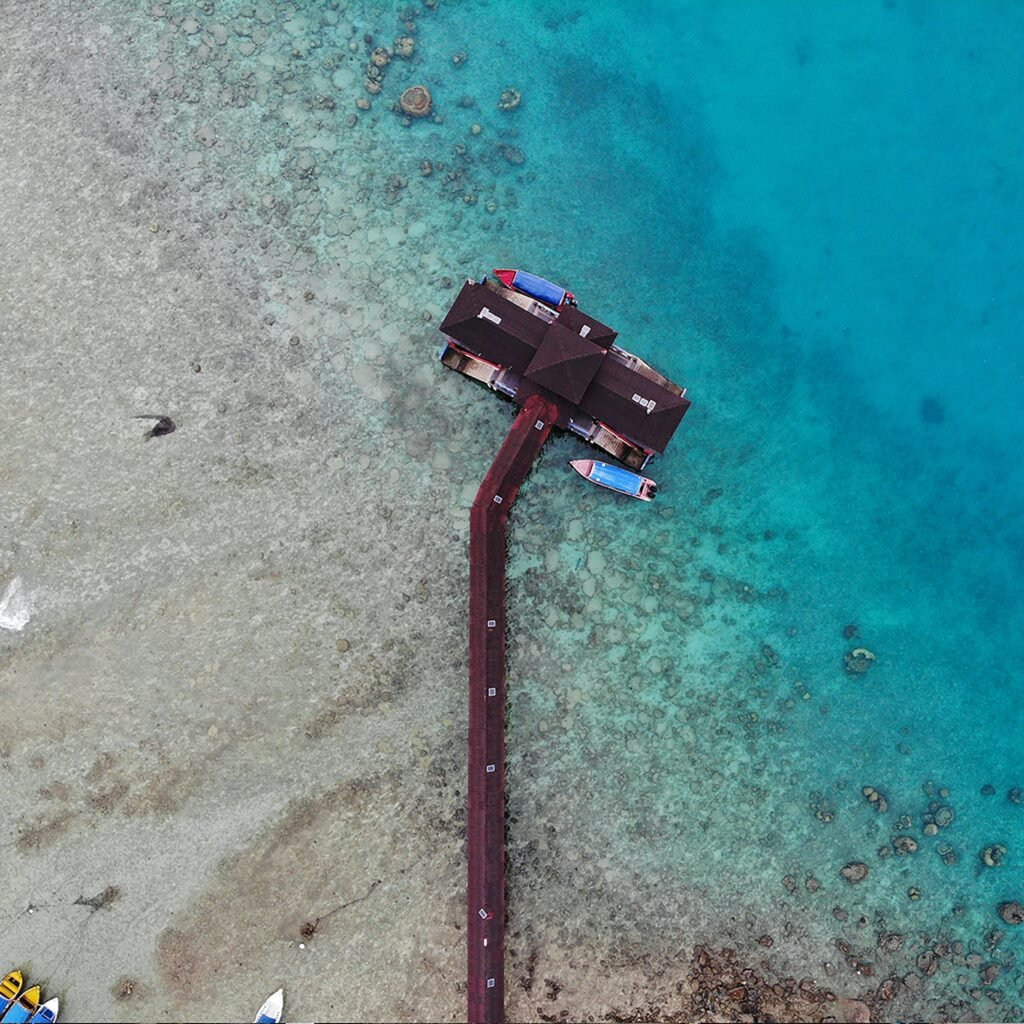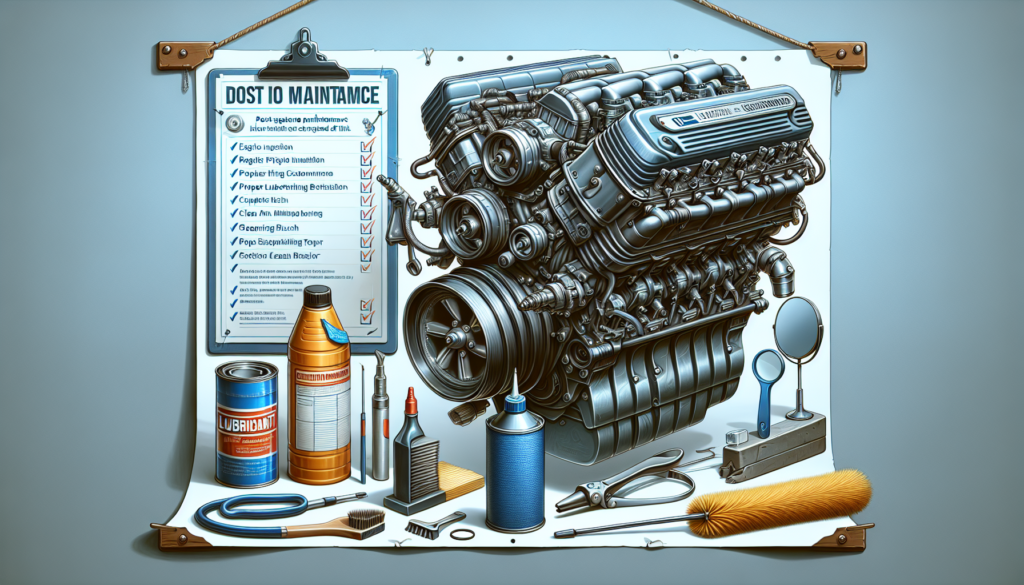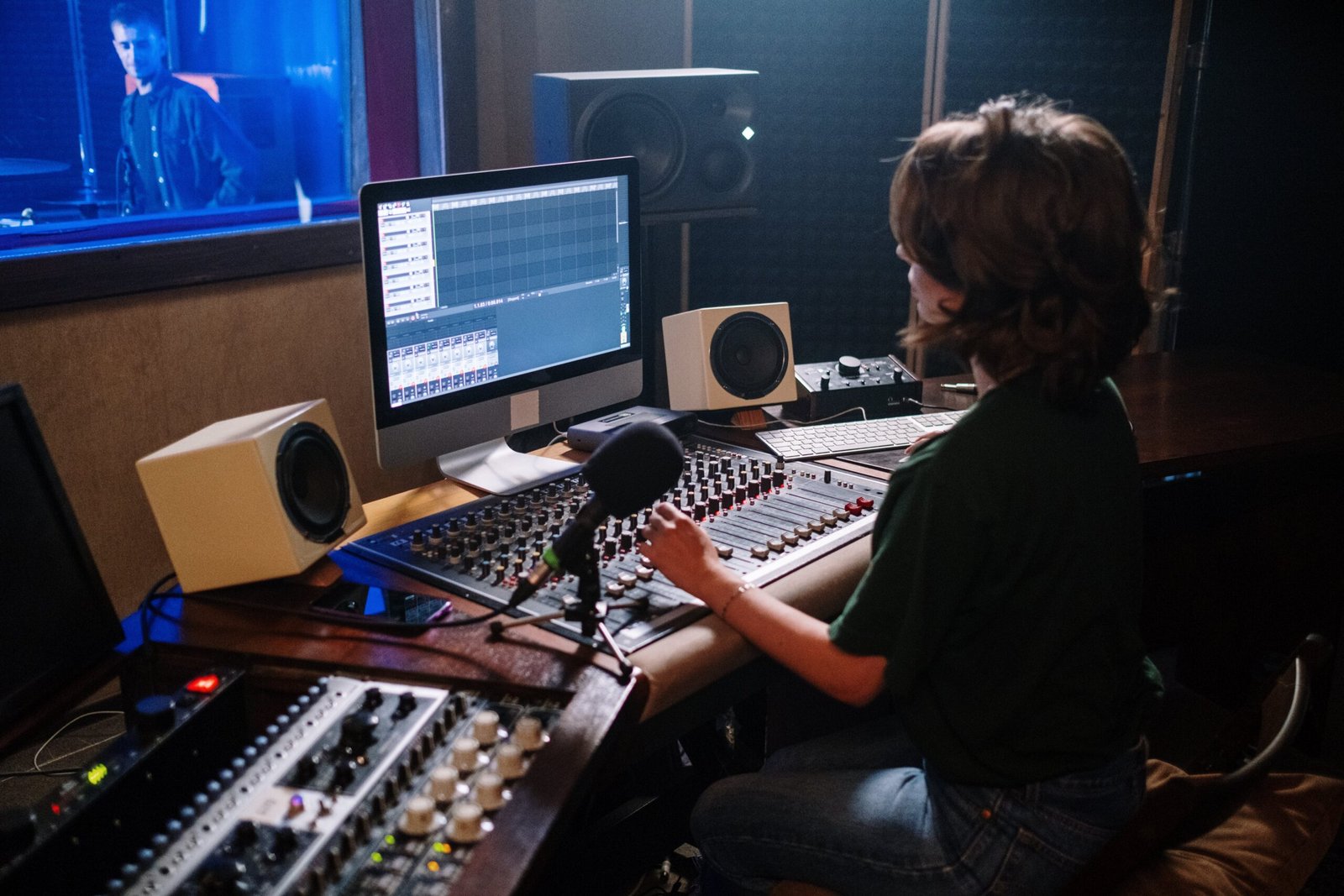Maintaining your boat engine after customization is crucial for its overall performance and longevity. Whether you have just installed a new engine or made significant modifications to your existing one, taking care of it becomes essential. This article will provide you with practical tips and guidelines to ensure that your boat engine remains in top-notch condition after customization. From regular inspections to proper cleaning and maintenance routines, we will cover all the necessary steps to keep your boat engine running smoothly and efficiently.

Regular Maintenance
Regular maintenance is essential to keep your boat engine running smoothly and prevent any major issues down the line. Here are some key areas to focus on when it comes to regular maintenance.
Check the Oil
Checking the oil regularly is crucial to ensure proper lubrication of the engine. Make it a habit to inspect the oil level and quality at regular intervals, preferably before every outing. Low oil levels can lead to engine damage, while dirty oil can result in reduced engine performance. If the oil appears dark or gritty, it might be time for an oil change.
Inspect the Cooling System
The cooling system is vital for preventing the engine from overheating. Regularly inspect the radiator, hoses, and water pump for any signs of leaks or damage. Additionally, ensure that the coolant level is adequate. Overheating can cause serious damage to the engine, so it’s important to address any cooling system issues promptly.
Clean the Fuel System
A clean fuel system is essential for optimal engine performance. Over time, dirt, debris, and sediment can build up in the fuel tank and lines, clogging the fuel system. Regularly clean or replace the fuel filter to prevent these contaminants from reaching the engine. Additionally, consider adding a fuel stabilizer to the fuel tank to prevent fuel degradation during periods of inactivity.
Replace Filters
Filters play a crucial role in keeping your engine clean and free from debris. Regularly inspect and replace the fuel, air, and oil filters as recommended by the manufacturer. Clogged filters can restrict airflow or cause contaminants to reach the engine, leading to poor performance and potential damage.
Tighten and Lubricate Connections
Vibrations and constant use can cause connections and fasteners to become loose over time. Regularly inspect and tighten all connections, such as hose clamps, electrical connections, and bolts. Additionally, lubricate moving parts, such as throttle cables and control mechanisms, to ensure smooth operation.
Monitoring the Engine Performance
Regularly monitoring your boat engine’s performance is crucial to identifying any issues early on and addressing them promptly. Here are some key aspects to keep an eye on.
Keep an Eye on the Temperature
A sudden spike in engine temperature can be an indication of cooling system issues. Install a temperature gauge and regularly monitor the engine temperature while in use. If the temperature exceeds normal operating range, take immediate action to prevent potential damage.
Monitor the RPM
Monitoring the revolutions per minute (RPM) can help you gauge the engine’s performance and identify any anomalies. Familiarize yourself with the normal RPM range for your engine, and ensure it stays within that range while in use. Significant fluctuations in RPM can indicate underlying issues that may require attention.
Listen for Unusual Noises
Unusual noises coming from your boat engine can often be a sign of trouble. Pay attention to any new or unusual sounds, such as knocking, grinding, or squealing. These noises can indicate engine or component issues that should be inspected and addressed promptly.
Storage and Winterization
Properly storing and winterizing your boat engine is crucial for its longevity and performance. Here are some important steps to follow when preparing your engine for storage or during the winter season.
Flush the Engine
Before storing your boat engine, it’s essential to flush the cooling system with fresh water to remove any salt or contaminants. This helps prevent corrosion and build-up that can occur when the engine sits idle for an extended period. Follow the manufacturer’s instructions for proper flushing procedures.
Stabilize the Fuel
Fuel can degrade over time, leading to problems when the engine is started again after a long period of inactivity. Add a fuel stabilizer to the fuel tank before storing your boat engine. This will help prevent fuel degradation and ensure that the engine starts smoothly when you’re ready to use it again.
Change the Oil
Before storing your boat engine for an extended period, consider changing the oil. Fresh oil helps protect the engine components and prevents potential issues that can arise from old, degraded oil. Consult your boat engine’s manual for the recommended oil change procedure and intervals.
Protect the Engine’s Exterior
During storage or winterization, it’s important to protect your boat engine from the elements. Use a cover or protective coating to shield the engine from dust, moisture, and other environmental factors that can cause damage. Also, ensure that the engine is stored in a dry and secure location to avoid any potential risks.
Electrical Components
Proper maintenance of your boat engine‘s electrical components is essential for reliable performance. Here are some key areas to focus on when it comes to electrical maintenance.
Check the Battery
The battery is the heart of your boat’s electrical system. Regularly inspect the battery for any signs of corrosion or damage. Clean the battery terminals and connections to ensure a good electrical connection. Consider using a battery maintainer or trickle charger to keep the battery charged during periods of inactivity.
Inspect Spark Plugs and Wires
Spark plugs and wires play a critical role in the ignition process. Regularly inspect the spark plugs for wear or fouling, and replace them as necessary. Ensure that the spark plug wires are in good condition and securely connected.
Clean Connections
Corroded or loose electrical connections can cause electrical issues and poor engine performance. Regularly clean all electrical connections, including those for the battery, ignition system, and sensors. Use a wire brush or electrical cleaner to remove any corrosion or debris and ensure a reliable connection.
Test Ignition System
The ignition system is responsible for starting the engine and delivering the spark needed for combustion. Periodically test the ignition system to ensure it’s functioning properly. This can be done using a spark tester or by consulting a professional technician.

Propeller Maintenance
The propeller is a critical component of your boat’s propulsion system. Proper maintenance ensures optimal performance and fuel efficiency. Here’s what you need to know about propeller maintenance.
Inspect and Clean the Propeller
Regularly inspect the propeller for any debris, fishing line, or damage. Remove any obstructions and clean the propeller thoroughly to ensure smooth operation. Inspect the propeller blades for cracks, bends, or other signs of damage and have them repaired or replaced as necessary.
Check for Damage or Deformation
Inspect the propeller hub for any signs of damage or deformation. A damaged hub can affect the propeller’s performance and potentially lead to further issues. If you notice any damage, it’s best to consult a professional technician for a thorough inspection and necessary repairs.
Ensure Proper Alignment
Proper alignment of the propeller is crucial for optimal performance and reduced wear on the engine. Regularly check the propeller’s alignment with the engine shaft and make any necessary adjustments. Misaligned propellers can cause vibrations and damage to the engine’s drive system.
Water Pump and Cooling System
The water pump and cooling system play a vital role in maintaining your boat engine’s temperature and performance. Regular maintenance of these components is essential for trouble-free operation. Here’s what you need to do.
Flush the Water Pump
The water pump helps circulate coolant through the engine, keeping it cool. Regularly flush the water pump to remove any debris and ensure smooth operation. Follow the manufacturer’s instructions for proper flushing procedures.
Inspect Cooling Hoses
Inspect the cooling hoses for any signs of cracks, leaks, or bulges. Replace any damaged hoses promptly to prevent cooling system failures. Also, ensure that the hoses are properly connected and clamped for a secure fit.
Check the Impeller
The impeller is responsible for drawing water through the cooling system. Regularly inspect the impeller for any signs of wear, damage, or debris. Replace the impeller as recommended by the manufacturer to ensure proper water circulation and prevent overheating.

Exhaust System
The exhaust system safely removes exhaust gases from the engine while minimizing noise. Regular maintenance of the exhaust system is crucial for both performance and safety. Here’s what you need to do.
Inspect and Clean Exhaust Manifolds
Regularly inspect the exhaust manifolds for any signs of corrosion, cracks, or leaks. Clean them thoroughly to remove any soot or carbon buildup that can restrict proper airflow. Address any issues promptly to prevent exhaust gas leaks and potential engine damage.
Check for Leaks
Inspect the exhaust system, including the joints and connections, for any signs of leaks. Exhaust leaks can be dangerous and lead to carbon monoxide poisoning. If you notice any leakages, have them repaired immediately by a qualified technician.
Clean the Muffler
The muffler helps reduce engine noise and directs exhaust gases safely out of the boat. Regularly clean the muffler to remove any carbon buildup that can affect its performance. Keep the muffler in good condition to ensure proper noise reduction and exhaust flow.
Fuel System
Proper maintenance of the fuel system is crucial for optimal engine performance and reliability. Here’s what you need to focus on when it comes to fuel system maintenance.
Inspect Fuel Lines
Regularly inspect the fuel lines for any signs of damage, leaks, or wear. Replace any damaged or deteriorated fuel lines to prevent fuel leaks and ensure proper fuel flow. Additionally, ensure that the fuel lines are securely connected and properly clamped.
Clean or Replace Fuel Water Separator
Fuel water separators help remove water and impurities from the fuel, preventing them from reaching the engine. Regularly clean or replace the fuel water separator as recommended by the manufacturer. Proper maintenance of the fuel water separator ensures clean fuel supply and protects the engine from potential damage.
Monitor Fuel Tank
Regularly inspect the fuel tank for any signs of leaks, corrosion, or contamination. Ensure that the fuel tank is adequately vented and securely fastened in place. Consider cleaning the fuel tank periodically to remove any sediment or debris that may accumulate over time.

Drive System
The drive system of your boat engine ensures power transmission from the engine to the propeller. Proper maintenance of the drive system is essential for reliable performance and longevity. Here’s what you need to do.
Inspect the Drive Belt
Regularly inspect the drive belt for signs of wear, cracks, or fraying. Replace the drive belt if it shows any signs of damage or deterioration. A worn-out drive belt can cause slipping, reduced power, and potential damage to the engine.
Check Fluid Levels
Regularly check and top up the fluid levels in your boat engine’s drive system, including the transmission and outdrive. Low fluid levels can lead to poor performance and potential damage. Follow the manufacturer’s recommendations for the proper fluid types and levels.
Grease the U-Joints and Propshaft
The U-joints and propshaft require proper lubrication to reduce friction and ensure smooth operation. Regularly grease the U-joints and propshaft as recommended by the manufacturer. Use a high-quality marine grease for optimal lubrication and protection against corrosion.
Sailboat-Specific Maintenance
If you own a sailboat with an engine, there are some additional maintenance tasks specific to sailboats that you need to consider. Here are a few areas to focus on.
Inspect and Maintain the Rigging
Inspect the rigging, including the standing and running rigging, for any signs of wear, damage, or corrosion. Over time, the rigging can deteriorate due to exposure to the elements. Replace any damaged or worn-out rigging components and properly tension the rigging as necessary.
Check the Sails
Regularly inspect the sails for any signs of wear, tears, or damage. Repair or replace any damaged areas promptly to ensure proper sail performance. Additionally, properly fold and store the sails when not in use to prevent unnecessary wear and damage.
Monitor Steering Mechanism
The steering mechanism is critical for sailboats equipped with engines. Regularly inspect and maintain the steering system, including the tiller or wheel, cables, and connections. Ensure that the steering mechanism operates smoothly and securely, with no excessive play or binding.
By following these comprehensive maintenance steps, you can ensure that your boat engine remains in optimal condition, providing you with a safe and enjoyable boating experience. Remember to consult your boat engine’s manual and follow the manufacturer’s recommendations for specific maintenance tasks and intervals. With proper care and maintenance, your boat engine can provide years of reliable service.



[…] a boat enthusiast, you’ve likely heard countless rumors and misconceptions about Boat Engine Customization. In this article, we will debunk some of the common myths surrounding this topic, providing you […]